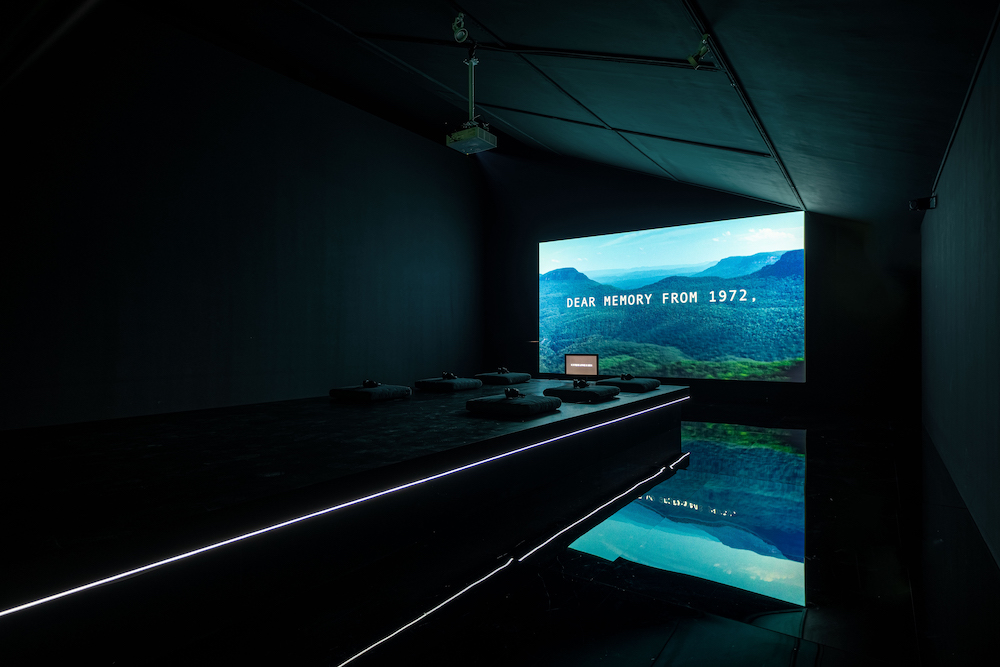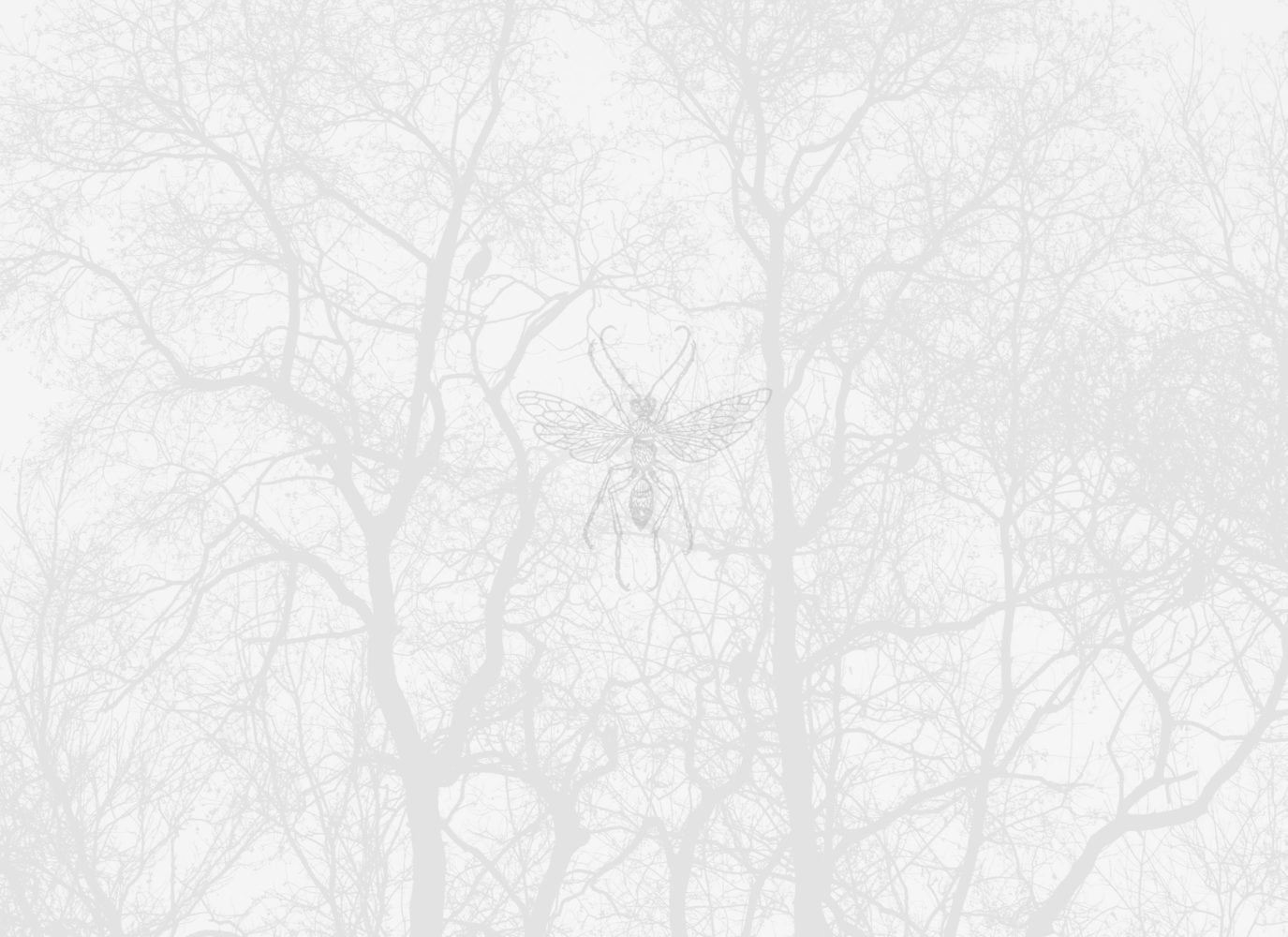In mid-April, the opening of the “No Space, Just a Place. Eterotopia” exhibition at the Daelim Museum in Seoul, powered by Gucci, was an early sign of hope for the future of the art world amid a devastating global pandemic that has temporarily shuttered art spaces around the world. Interestingly enough, the show, on view through July 12 and accessible online via a 360-degree video, is an investigation of independent exhibition spaces—some of the arts organizations most impacted by the effects of COVID-19.
Featuring presentations from Audio Visual Pavilion, Boan1942, d/p, Hapjungjigu, OF, Post Territory Ujeongguk, space illi, Space One, Tastehouse, and White Noise, the show is a collaboration between Gucci’s creative director, Alessandro Michele, and curator Myriam Ben Salah. Whitewall checked in with Ben Salah just before the opening, to learn how Seoul’s alternative art scene and vibrant community served as inspiration.

Cécile B. Evans, What the Heart Wants, 2016, exhibition view of “No Space Just a Place,” Daelim Museum, Seoul (2020).
WHITEWALL: What was the starting point for “No Space, Just a Place. Eterotopia”?
MYRIAM BEN SALAH: Gucci’s creative director, Alessandro Michele, was eager to get to know and interact with the Korean artistic scene through an exhibition project, expanding and developing his reflections on eterotopia, and so I was approached. It seemed clear to me that, as an outsider, the most relevant thing wouldn’t be to do something about the Korean scene, but really with Korean cultural producers. While researching art practitioners in Seoul before my first visit there, it became clear that there was a thriving scene of independent art spaces run by artists or curators that were positioned as an alternative to the main institutional and/or market-driven art world.

Susan kae Grant, “Wasp”, 2020, 42.5 x31 inches, Archival Inkjet Print; © Webster’s Seventh New Collegiate Dictionary, 1963, Midred A. Mercier, assistant editor of illustrations, courtesy of Conduit Gallery.
I had the pleasure of meeting artist and curator InYoung Yeo, who became a curatorial consultant for the project and who was key in making me realize the importance of these structures within the local art ecosystem. Working with these spaces allowed me to reflect on a wider, and more metaphorical, definition of an “alternative” or “other” space: In a moment where the perspectives on the future are slightly dark—and I would say even more so within the crisis that we are currently experiencing—it seems crucial to consider new spaces (physical and mental) for building alternative narratives, spaces that challenge what’s deemed “normal.”
WW: What role have alternative art spaces played in Seoul since the late nineties?
MBS: The first generation of alternative art spaces appeared in Seoul in the late nineties with quite radical of a mission. They intended to truly subvert the existing system and provide opportunities for experimentation, which the mainstream art world was lacking. They were positioned as an alternative to the main institutional and/or market-driven art world. Independent and alternative art spaces are historically underground venues that populate storefronts, lofts, warehouses, and other places abandoned by the mainstream. They usually promote work that is politically engaged, experimental, and more concerned with artistic debates than commercial viability. So I believe those spaces opened the way for artists to act, produce, and think without the pressure of the institution (be it the museum or the market).
WW: What has been their lasting impact on the contemporary art community in Seoul today?
MS: It seems that between the nineties and now, gentrification played an important role in the evolution of independent art spaces, and so does social media, which has shifted their accessibility. Geographical accessibility now isn’t the first criteria, for example, which is why the new generation of independent spaces are not gathered in one specific area—as they are in many cities and as they were in the past, in “gallery districts” such as Samcheong-Dong or Cheongdam-dong—but rather scattered through Seoul, occupying residential neighborhood as well as commercial ones, sneaking inside markets, old shopping centers, restaurant buildings, and industrial areas. I think the first generation opened the road for that, for an art ecosystem that’s more rhizomatic than centralized, both geographically and institutionally.
WW: What kinds of freedoms and possibilities are opened up for artists when presenting work outside of traditional white box galleries?
MBS: I think presenting work outside of the proverbial white cube opens up the question of how ideas are distributed, circulated, and received. It also brings up the audience into the equation. Institutions tend to create an image of contemporary art that’s a bit alienating, because audiences feel that they’re not equipped to enter the gallery or the museum and to understand what’s in it. But, actually, artists have the same references as the audience. Getting out of the museum and presenting art in other locations, to other audiences, and interacting with the immediate urban environment opens up the array of contemporary art and makes it more accessible while also more experimental.
WW: You also invited a number of local and international artists to participate in an immersive installation inspired by the near future. Can you tell us about the prompt and how the artists responded to it?
MBS: The five artists I invited have a practice that engages with the metaphorical meaning of “alternative spaces”: They all explore either the margins of our societies, or the possibilities of our near future. I chose projects that specifically dovetailed with such concerns. New York–based Moroccan artist Meriem Bennani, for example, reenacts her work Party on the CAPS, a video about the imaginary inhabitants of CAPS, an island in the middle of the Atlantic Ocean where refugees and immigrants “illegally” traversing oceans and borders are interned. All these artistic interventions playfully question the narrow perspectives of normative dominant discourses. The work of artist Kang Seung Lee is more direct, as he challenges the narrow perspectives propagated by biased (art) historical canons and academic institutions, resisting the discursive and academic violence that has resulted in the historical erasure of queer people in Korea.
WW: What future does the show propose for the next generation of alternative spaces for artists—in Seoul and elsewhere?
MBS: I think “No Space, Just a Place. Eterotopia” is a celebration of the work of these entities, and I hope the exhibition will create connections, strengthen the artistic community around those spaces, and foster future collaborations.








